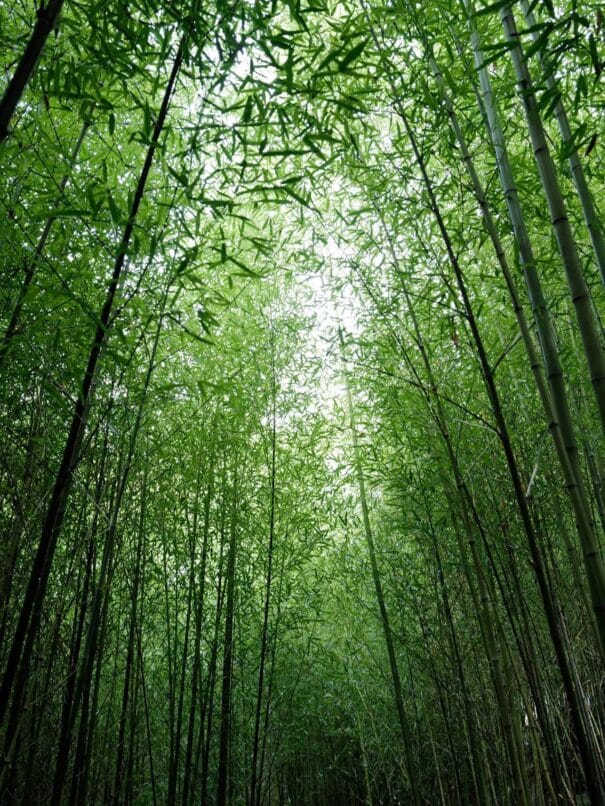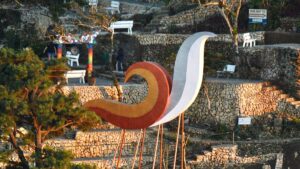The Mirador Arashimaya Bamboo Grove
1st MIRAR VISTA & PRAYER STOP:
Meditation on Self-Awareness and Learning from Nature
• Begin the walk toward the Mirador Arashimaya Bamboo Grove. When walking go slowly. Observe carefully and note what you see. You can write this down.
• Find a spot to sit quietly at the grove and read what follows.
Orientation
• The bamboo belongs to the grass family. It is one of the most useful grasses, utilized in the construction of dwellings, basketry, fencing, fishing, boat-building, etc. Bamboo is generous and helpful; its canes are also used for scaffolding, barbeque sticks, toothpicks, and chopsticks.
• Bamboo grows fast and survives in harsh environments. There are 2 types of bamboo: sympodal or clumping type and monopodal or walking type. The clumping bamboo is common in the tropics and near the equator because its close-in structure helps it withstand typhoons. The walking bamboo is common in temperate climates, where it can survive the snow.
• There are approximately 16,000 species of bamboo and between 1,000 and 1,600 belonging to the genus Bambusa, which is the most common genus in the Philippines. In the Philippines, 60 species of bamboo have been documented.
• The bamboo grove at MH-ESP belongs to the walking type and the genus Phyllostachys. The best known of this genus is Moso (Phyllostachys edulis), which produces edible shoots.
• MH-ESP Arashimaya grove, named after a famous bamboo grove in Kyoto was planted in 1980 so it is about 40 years old. The bamboos have reached their maximum height and diameter. They are not newly planted but mature bamboos.
• MH-ESP bamboo has a genetic mutation that once in a while yields “tortoise shell bamboo,” known in Japanese as “kikko.” Canes that show this mutation are rare and highly treasured.

Activity
Walk around the bamboo grove. Search for a tortoise shell bamboo. You may or may not find one. Take a photo if you do.
Prayerful consideration
• The bamboo is a beloved Asian symbol of a well-functioning human being. It lives rooted to the earth and accepts the blessing of sun and rain. It bends in strong winds without breaking. It accepts its irregularities and defects and turns them into beauty. The bamboo is resilient as it is life giving. Its shoots are food, its canes are used every day for dwellings and for dining.
• Are you like the bamboo? Are you rooted in your family, community, your inner self • Are you nourished by God’s warmth and light? Do you accept God’s Spirit that comes to you like the “dewfall?”
• How flexible and resilient are you? Are you able to adjust to changing life situations? How did you cope during the pandemic lockdowns?
• Did you break? After being broken have you healed and become more vibrant?
• How generous have you been? Have you feed the hungry and sheltered the homeless? Have you been a cane for the elderly, weak and sick?
• Did you sway with the winds of change and added to the music of nature with the rustling of leaves and the creak of the canes?
Prayer
Dear Lord, you have blessed us with many gifts, spiritual and physical.
Bamboo is one of your natural and physical gifts.
It is your gift to the poor,
for even they can build shelters of bamboo that grow in abundance on our land.
Grant, Lord, that we may be rooted deeply in our lives, our roots planted in your love,
our hearts and mind raised to heavenly light.
Give us the grace of resilience. Let us not break especially in trying times.
Help us to be generous to others, especially to those on the periphery of our lives.
Lord, teach us to be generous, to give, and not to count the cost. Amen.
End your prayer time with thanksgiving and pray the OUR FATHER.







